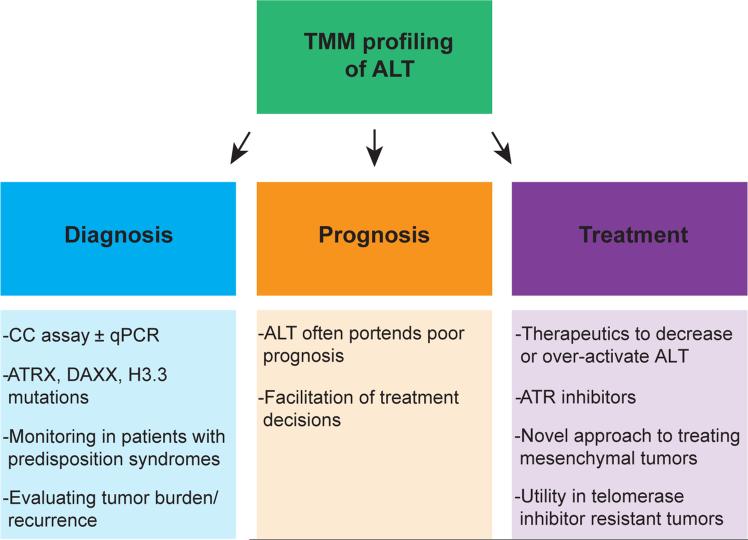Figure 2.
Telomere maintenance mechanism (TMM) profiling of alternative lengthening of telomeres (ALT) may have clinical utility for diagnosis, prognosis, and treatment of ALT-positive tumors. Diagnosis could be determined through the C-circle (CC) assay with or without quantitative PCR (qPCR) techniques to increase sensitivity and specificity. Additionally, mutational profiling of ATRX/DAXX/H3.3 may predict ALT activity in some tumor types. These tests may facilitate monitoring for tumor formation in patients with syndromes predisposing to ALT-positive tumors or for tumor dynamics or recurrence of established ALT-positive tumors. Since ALT has prognostic value in many settings, identification of ALT could enable more informed treatment decisions. Finally, TMM profiling may allow for personalized telomere-targeted therapies. In particular, treatments to decrease or increase ALT activity could exploit vulnerabilities present in ALT-positive tumors and lead to selective cell killing. ATR inhibitors represent a promising therapeutic strategy. By targeting ALT, we may in principle benefit patients with ALT-positive tumors, including those that have escaped telomerase inhibitors through ALT activation.

